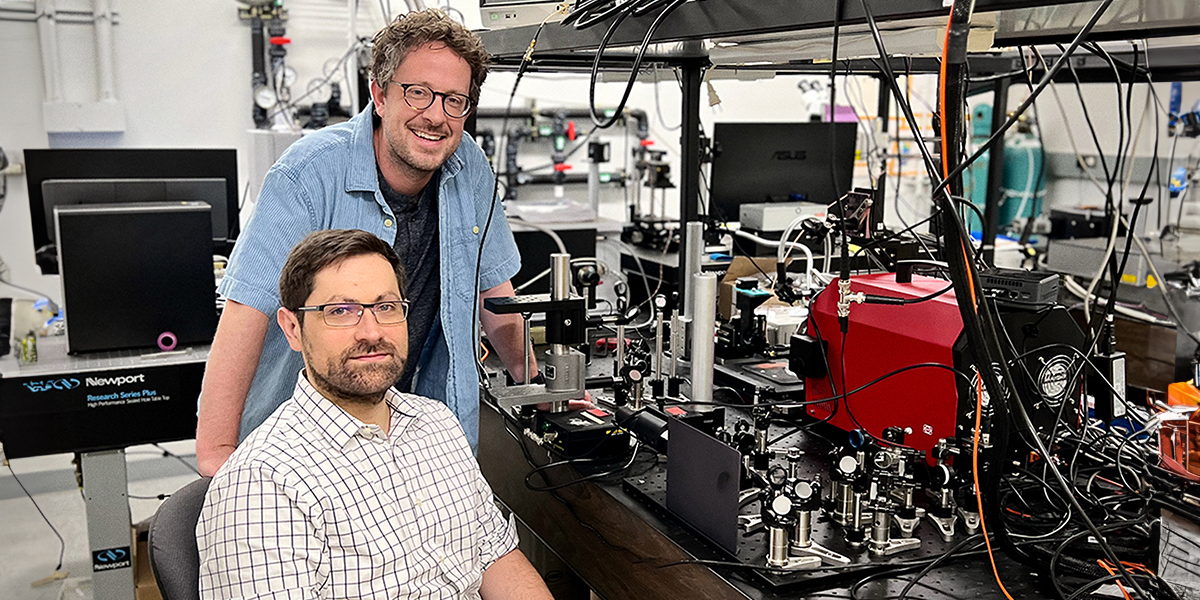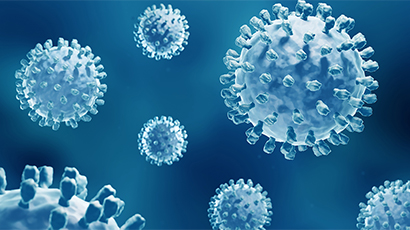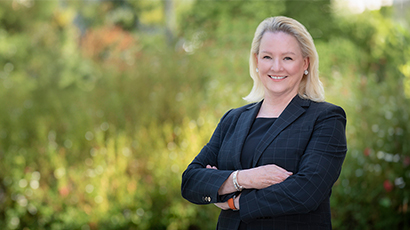The National Cancer Institute has awarded over $3 million in funding to a UC Davis project to develop a tiny nanotechnology device capable of diagnosing cancer from drops of saliva and other biofluid samples.
J. Sebastian Gomez-Diaz and Randy Carney are collaborating to develop and test the new diagnostic device. GomezDiaz is an associate professor and chancellor’s fellow in the Department of Electrical and Computer Engineering, and Carney is an associate professor in the Department of Biomedical Engineering.
“The goal is to put forward a new portable neural network platform that [can] analyze several biofluids — like saliva or blood — inside a small and compact device [that will] combine and then utilize the portion of the infrared spectrum of those biofluids for cancer detection,” Gomez-Diaz said.
Identifying the “fingerprints” of cancer
The team is designing the compact device, more than 100 times smaller than a penny, as a cost-effective tool for infrared absorption, or IR, spectroscopy.
IR spectroscopy uses sensors to differentiate molecules based on how much light energy each one picks up. The idea is that each molecule has a distinctive absorptive fingerprint. When visualized, these infrared fingerprints look like an audio file: scraggly lines with sharp peaks and short valleys.

“Infrared absorption spectroscopy is used in basic chemistry labs up to clinical diagnosis, but it’s an expensive technique that requires a bulky and difficult to-use apparatus and yields complicated data for expert interpreters,” Carney said.
That’s where the neural network comes in. By joining this identification method with machine learning capabilities, the team aims to accelerate and simplify the process.
“We’re going to identify the minimum number of those soundwave-like peaks that we need to make diagnostic decisions with machine learning, and our preliminary data indicate that it’s very few,” Carney said. “Each of the miniature sensors can be tuned to one of those peaks, with the sensor output fed directly to the machine learning algorithm.”
Making cancer care more accessible
The team will focus on using the device for head and neck cancer detection at this stage, with assistance from Andrew Birkeland, a head and neck oncologist and associate professor. The cancer center provided the seed funding for early data collection on this project.
What sets this technology apart from past efforts is the neural network’s ability to notice patterns in the full spectrum of a saliva sample. Other projects have used significant energy to isolate a single molecule or metabolite for diagnostic purposes.
The final product, the team explains, will be a small device that a patient can spit into, like a 23andMe genetic test. Once the device receives the sample, the patient can press a button to begin the diagnostic process, which the team expects to take no more than a few seconds.
“What we’re trying to do is miniaturize these huge machines that we have in the lab into a small box that the average person can use,” Gomez-Diaz said.
The technology could enable small clinics and individuals to conduct disease screening that until now has required large machines in medical laboratories.
“We believe this project is the early step toward a platform that can be miniaturized into a small wearable device that can monitor your cancer state non-invasively throughout the day,” Carney said.





